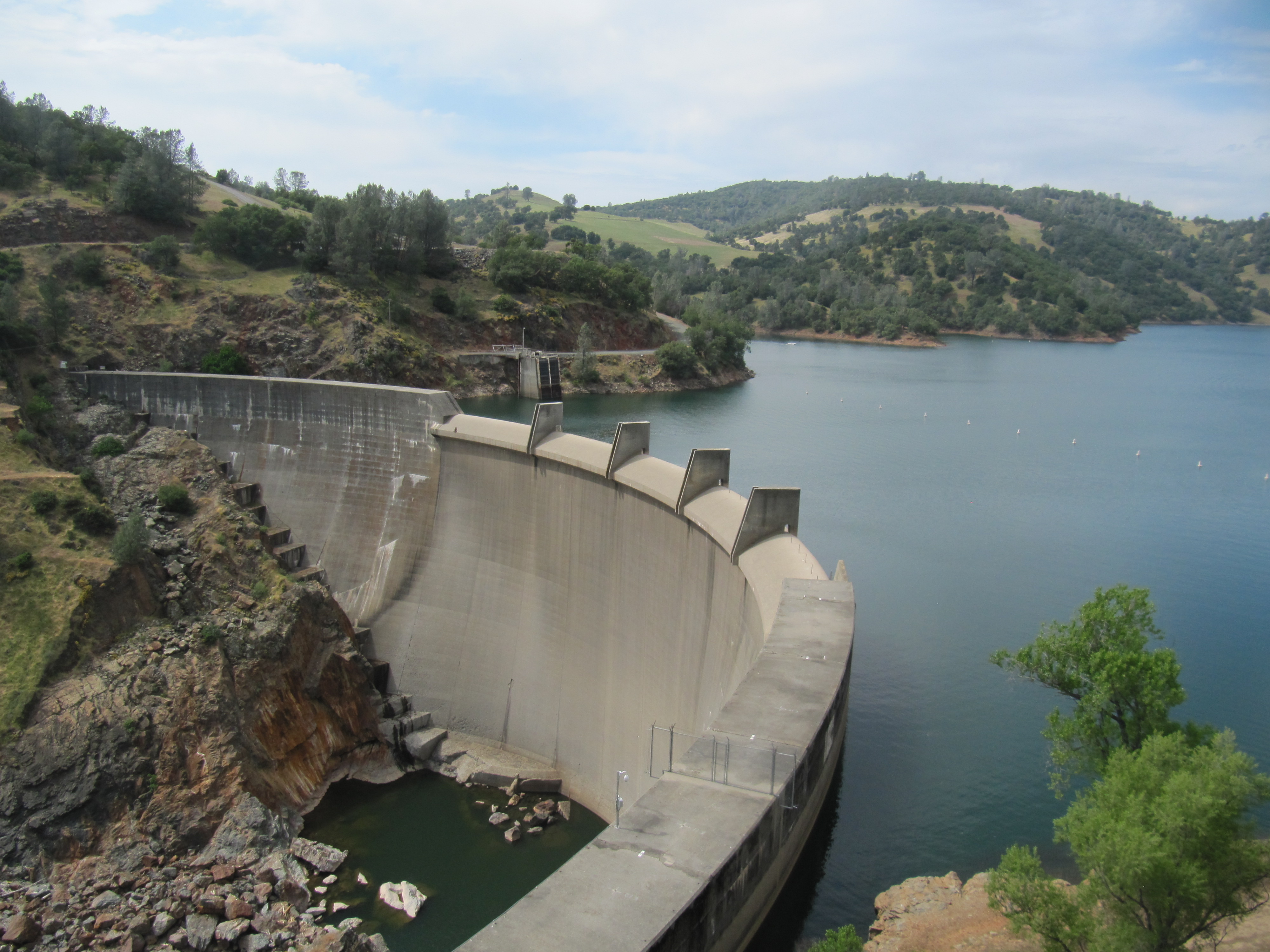Unraveling the knot of hydropower development on the Yuba River

When most of the dams in California were built, there were few, if any, safety or environmental regulations governing how they operated. Now most hydropower projects, whether they’re owned by local agencies or power companies, need licenses from the Federal Energy Regulatory Commission, or FERC. (Federal projects don’t require FERC licenses.) Licenses are good for 30 to 50 years, and licensees don’t have to keep up with, for instance, environmental laws passed in the intervening years. So when a hydropower project does come up for relicensing, there’s a lot to catch up on.
I described some of the relicensing process in a radio story for The California Report for Climate Watch’s “Water and Power” series. Dennis Smith, the Hydropower Relicensing Manager for Region 5 for the Forest Service, gave me a taste of how complicated relicensing is when he showed me a flow chart [PDF] of how the process works. It has 39 boxes on it, each a discrete step. A typical application takes at least five years to complete. Some take much longer.
“You could have a child and he would be in the first grade by the time you got a license for a dam,” Smith said.
One reason why relicensing is so complicated, is that the hydropower projects themselves are incredibly complex. We are not talking water wheels here.
Yuba-Bear and Drum Spaulding Projects Schematic (Modeling Version)
This map shows the Yuba-Bear and Drum-Spaulding hydroelectric projects, owned by the Nevada Irrigation District and Pacific Gas and Electric, respectively. These two projects, on the Yuba River in the Sierra Nevada, are so entwined, they’re being relicensed together. Combined, it’s the most complicated hydropower project in the state — possibly in the nation.
“You could describe it as a plate of spaghetti tossed on a map, with meatballs. It almost looks that random until you get to know it,” Steve Rothert, the California Director for environmental group American Rivers, told me. And it’s not the only relicensing happening on the Yuba right now. The Yuba County Water Agency’s Yuba River Development Project is also going through the process.
“Here on the Yuba there are three different hydro projects going through relicensing, that involve over 30 dams and almost 20 powerhouses,” Rothert told me. “And within the next three years these dams will have new licenses that will govern the next 30 to 50 years.”
So the stakes are high when Rothert advocates for better habitat for fish and other animals during relicensing. He’s primarily trying to negotiate for higher flows — for more water to be released into the river. And with a project like Yuba-Bear Drum-Spaulding, he and all the other stakeholders aren’t just trying to agree on a single flow. There are nearly 50 sections of river to evaluate, at different times of year and during all types of years. (The flows during January in a wet year are not the same as the flows during September in a dry year.)
And then there’s the irony of where I interviewed Rothert about hydropower relicensing. We stood overlooking Englebright Dam, built by the Army Corps of Engineers to block sediment from gold mining. Fish can’t get past the dam, and the National Marine Fisheries Service issued a biological opinion [PDF], saying it jeopardizes spring-run Chinook salmon and other species. But it’s not a hydropower dam — and it’s owned by a federal agency, anyway — so it’s not in FERC’s jurisdiction; it doesn’t have to go through relicensing.
And yet, Englebright, too, is linked to the hydropower projects on the Yuba. Two powerhouses are just downstream of it — one owned by PG&E, the other by the Yuba County Water Agency. To misquote John Muir, “When we try to pick out anything by itself, we find it hitched to everything else in the Yuba River.”
